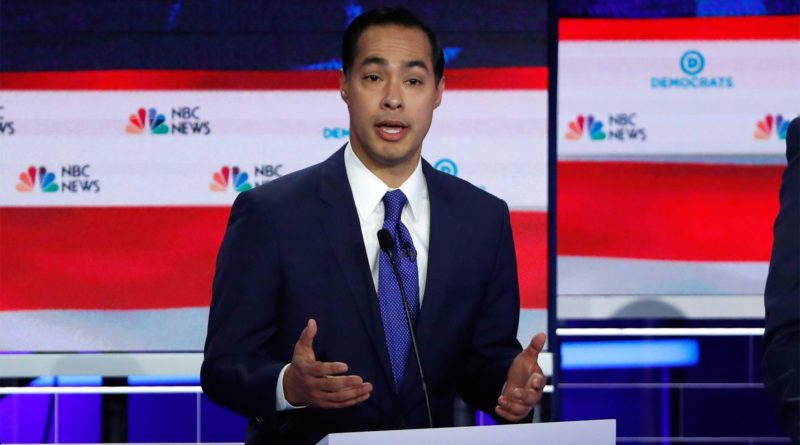This was written by Emily, one of our summer interns. The opinions expressed herein do not reflect those of Civitas other than respect for the value of open dialogue.
After the first round of debate for the Democratic presidential nomination, many took notice of Julian Castro for the first time. The former Mayor of San Antonio and Secretary of Housing and Urban Development under the Obama Administration was only polling with 0-1%. But directly after the debate, his number of searches on Google increased by over 2400%. While Castro shined during his speech on “reproductive justice” including for transgender citizens and for crushing fellow candidate Beto O’Rourke for not “doing his homework” on laws regarding the Southern border, one aspect of Castro’s campaign that is causing misconceptions is his proposed immigration policy.
Castro’s main focus on immigration is repealing Section 1325 of the United States Code. Essentially, Section 1325 makes it a federal criminal act to cross the border illegally. Unlike what most believe after hearing Castro’s plan, repealing Section 1325 would not result in open borders. In fact, immigration and the process of dealing with illegal immigrants would return back to how it occurred before Trump’s Administration. Illegally crossing the border would still be a civil offense, and if illegal immigrants were found to be residing in the United States, they would go to court to determine if their life in their home country warranted their illegal crossing. If the judge rules that their situation was not drastic enough to count for refugee status or asylum seeking, the illegal immigrants would still be deported. Other sections, such as Section 1328, prevent immigration for “immoral purposes” which allows the government to deport or refuse entry to any immigrant who is crossing the border for human trafficking, drugs, or other crimes.
Why change the Code? President Trump has significantly decreased the number of asylum seekers and refugees that can legally come into the United States through various executive orders and through his cabinet members. The most recent action President Trump has done was put in place a “metering” system at the border. Metering creates a quota, or limit, to how many migrants can claim asylum in the United States each day. Amongst these Trump-era immigration policies and the dwindling classification of refugee status and asylum seekers, Castro’s immigration policy is the fastest and most aggressive policy to assist those fleeing from life-threatening conditions in their home countries.
Although initially Castro’s immigration standpoint may seem extreme, the reality of what would result from his policy would greatly improve the situation at the border, the way that Immigration and Customs Enforcement (ICE) operates, and who is considered a refugee/asylum seeker without completely abolishing ICE or opening the border, as most believe.

